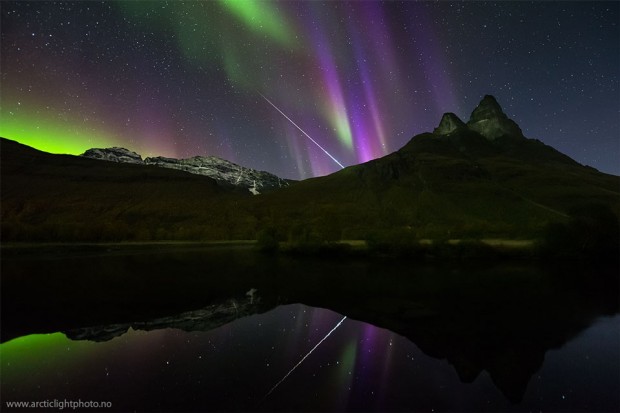When you hear the word “fireball” what do you imagine? Wizard and witches battling for supreme dominance? Harry Potter? Hadouken? Kamehameha? Whatever “fireball” may remind you of, we can all agree fireballs aren’t actually real — at least not in the magical sense. Or are they?
The following is a photograph of a fireball slicing an aurora borealis above Norway:
The white streaking thing in the photo — that’s the fireball. It is so bright that it lit up the mountain (the one you see in the background) during the night. We know it isn’t a magical fireball, so what exactly is it? Here, I’ll let NASA themselves explain it to you:
What’s happening behind that mountain? A convergence of variable sky spectacles. One night in mid-September near Tromsø, Norway, high red aurora could be seen shimmering through lower green aurora in a way that created a striking and somewhat unusual violet glow. Suddenly, though, the sky flashed with the brightest fireball the astrophotographer had ever seen, as a small pebble from outer space violently crashed into the Earth’s atmosphere. The glow illuminated the distant mountain peak known as Otertinden of the Lyngen Alps. The bright meteor, which coincidently disappeared behind the same mountain, was also reflected in the foreground Signalelva River. Although you might consider yourself lucky to see either an aurora or a bright meteor, pictures of them together have been recorded several times previously.
If you feel a little bit let down because the above photo only shows the aftermath of the fireball, you will enjoy the following bonus footage:
That video is of a fireball over Edmonton, Canada, caught by the camera on the dashboard of a police car. Looks like something out of a movie, doesn’t it?
[via NASA]

 Email article
Email article




